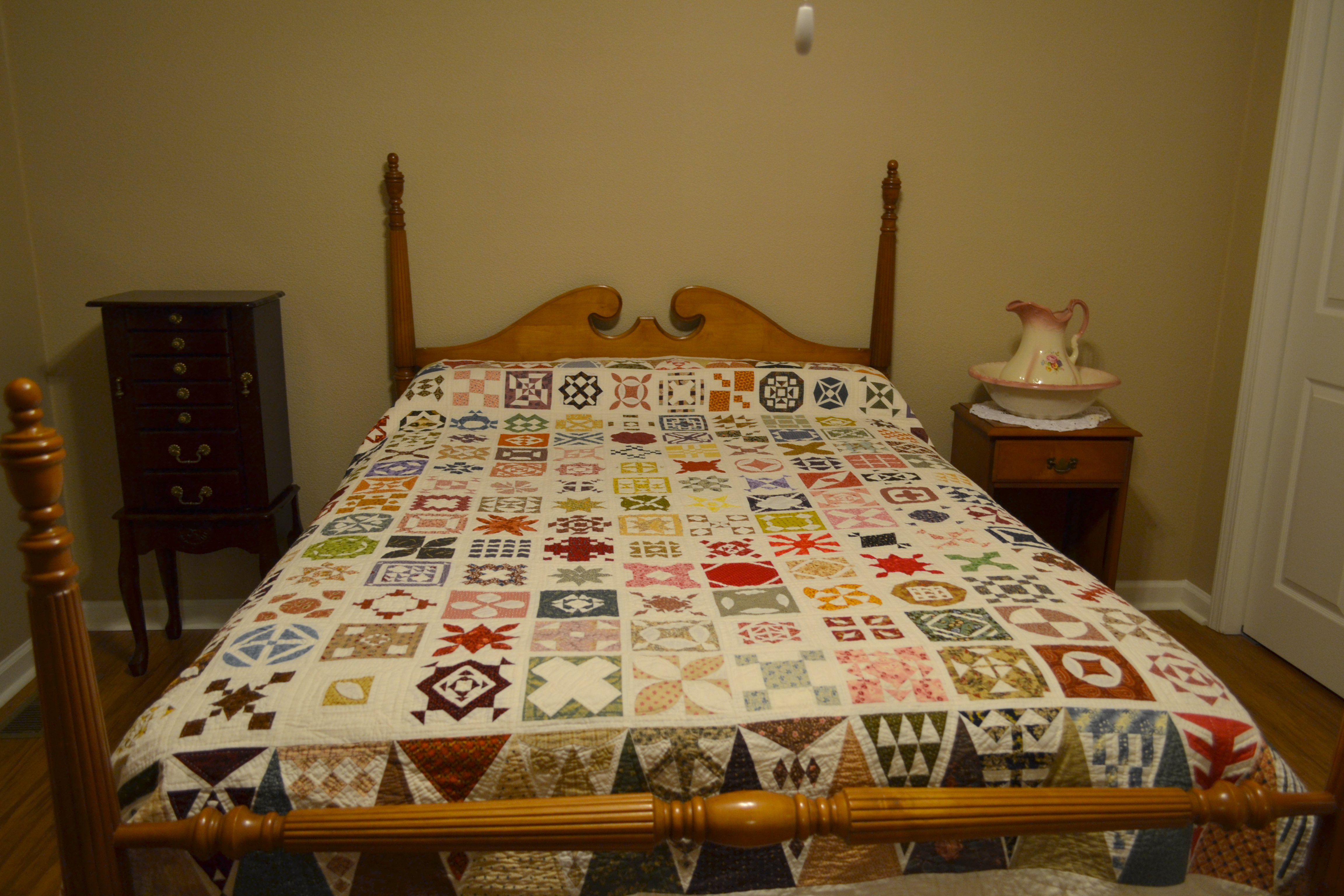On the backside of a quilt, a panel reads
I have named this quilt “My Dear Jane” which is a reproduction of Jane A. Steckle’s quilt she made during the Civil War titled “In War Time 1863”. I, Donna Patterson, began this quilt journey on April 5, 2010, 4 years, 3 months, and 15 days later on July 30, 2014, this quilt was completed.
Hand quilted by Irene Harper, my 87 year old mother, and Donna Patterson.
5,600 plus pieces
225 patterns
281 fabrics
169 pieced blocks
52 pieces triangles
56 solid triangles
4 corner blocks
Countless yards of thread
When viewed from the front, the quilt is a quick kick of color. Deep reds, pale yellows, oranges, greens, purples, and pinks all demand the eye’s unfocused attention. The patterns, too, reject uniformity. Sharp, jagged angles push up against soft, rounded edges, an arrangement of thoughtful geometric design. Regarded individually, each panel suggests the quilters’ keen awareness of ordering, movement, and composition. As a whole, the quilt is representative of timeworn quilting traditions that place a high value on community, craftsmanship, and creativity.
Over the course of 2017 and 2018, Sandy Staebell, Kentucky Museum’s Registrar and Collections Curator, conducted fieldwork with more than 30 quilters throughout the region. Her findings were eventually turned into a presentation for the Osby Lee Hire and Lillian K. Garrison Hire Memorial Lecture Series, a program which seeks to provide a deeper understanding of the history and culture of Allen County and Monroe County in Kentucky and Macon County in Tennessee. Staebell’s presentation, which was titled “Heritage, Tradition, & Craft,” focused on the aesthetics, processes, and finished pieces of both individual quilters and larger communal groups, such as the Buck Creek Homemakers (Allen County) and the Monroe County Piecemakers.
As a widely recognizable form of folk art, quilting highlights both the conservative and dynamic nature of folklife. While the women Staebell interviewed work within a particular artistic framework, one that underscores the nuanced relationships between color, shape, and style, they also move beyond traditional forms of quilting to create pieces that reflect their own personal experiences, preferences, and tastes. In folk studies, the study of material culture has shifted from an emphasis on product to the more contextually-relevant emphasis on process. While the final quilt is no doubt a visually and emotionally-stimulating piece of artwork, it should also be understood as a manifestation of the work required to maintain strong bonds between family and friends.
The collection (FA 1131) is located within WKU’s Manuscripts and Folklife Archives and includes hundreds of color photographs of quilters proudly displaying their quilts as well as digitally recorded audio interviews where women discuss their sources of inspiration, their most treasured pieces, and their connections to the quilting community.
For more information on quilts and other forms of expressive material culture visit TopSCHOLAR or browse through KenCat, a searchable database featuring manuscripts, photographs, and other non-book objects housed in the Department of Library Special Collections!
Post written by WKU Folk Studies graduate student Delainey Bowers


